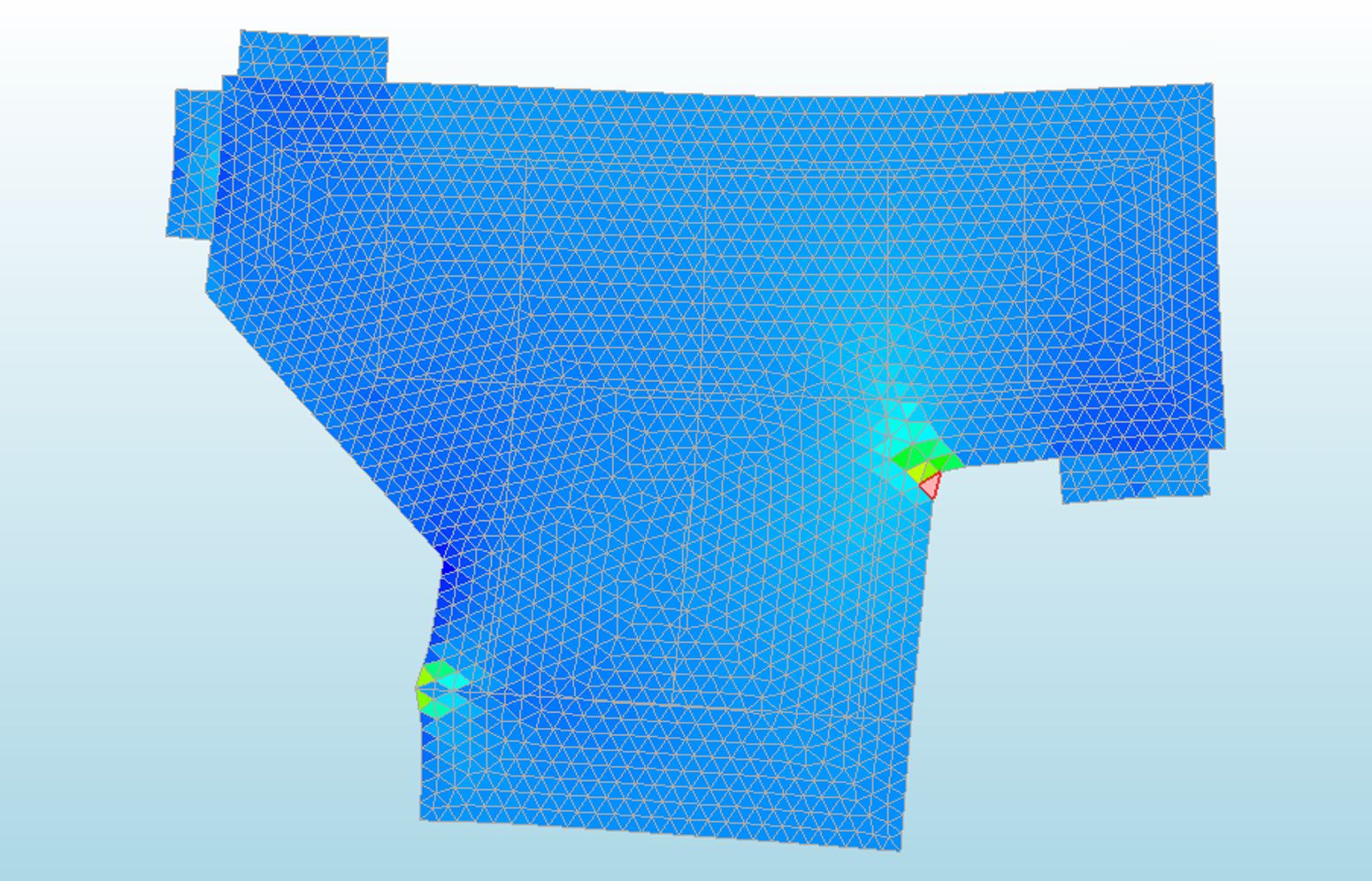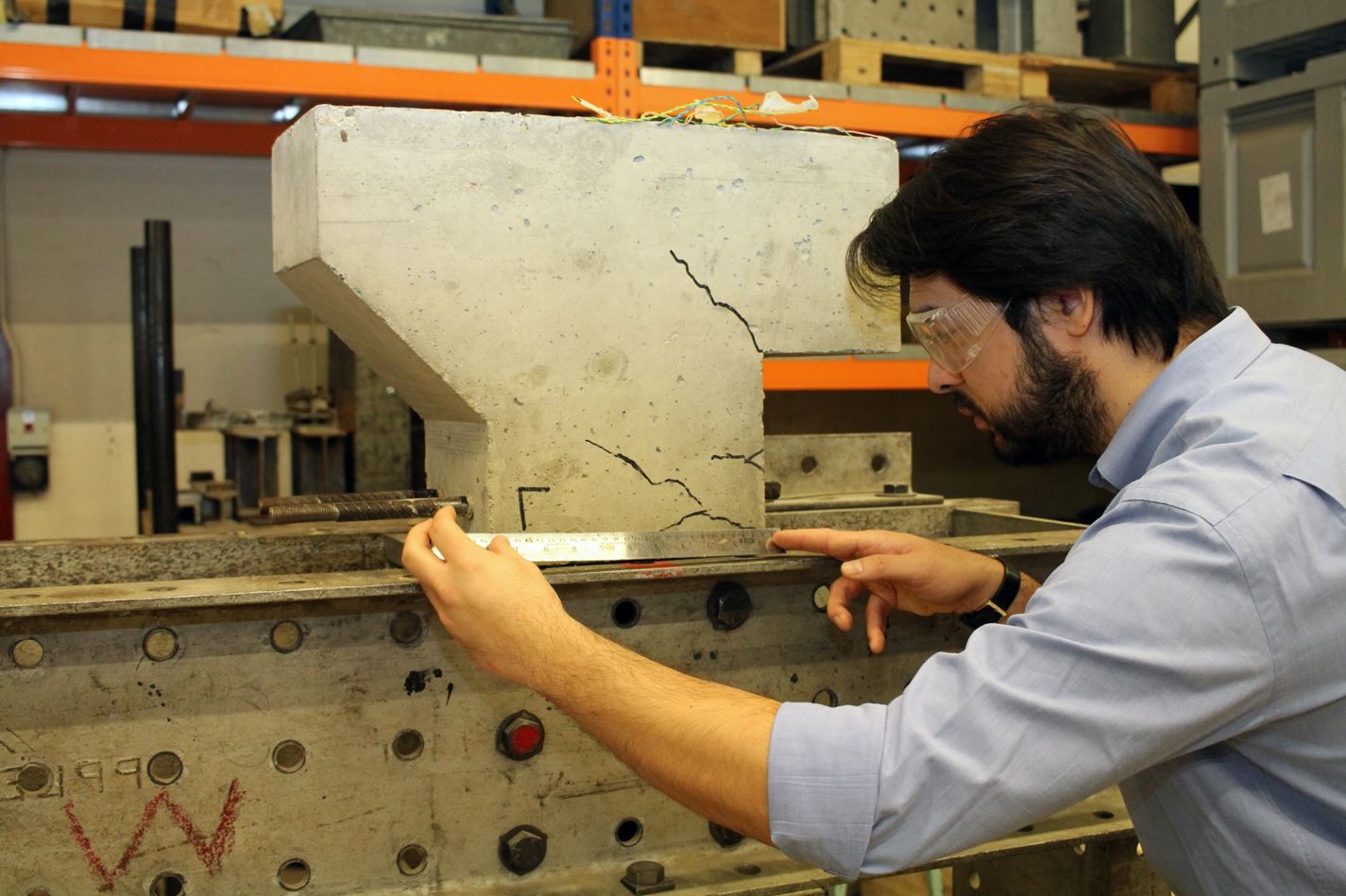Introduction
Some existing reinforced concrete structures are more vulnerable to deterioration than others. The collapse of a section of the de la Concorde overpass in Quebec, Canada in 2006 and the more recent collapse of the Annone Brianza overpass in Italy in 2016 show an inherent vulnerability of half-joint bridges.
A half-joint (or dapped-end) is a common support detail in precast concrete structures. It consists in a sudden reduction in depth at the end of a structural element, which forms a protruding nib. This is a common connection in reinforced concrete cantilever bridges (Gerber system) because it simplifies buildability.
Despite the advantages that justified their wide use in the past, there are several problems associated with half-joints. Early design codes led to insufficient reinforcement provisions. Leakage of water through the joint causes deterioration of the concrete and corrosion of the reinforcing steel. The difficulty in accessing the bearing seat for inspection and maintenance further complicates the problem. The analysis of this type of structural element is very complex and there is no unified theory that is universally accepted.

Aims and objectives
The aim of the project is to study the behaviour of deteriorated reinforced concrete half-joint structures. The objective is to investigate potential failure modes induced by deterioration. The ultimate long-term goal is to provide guidance for the effective management of our reinforced concrete infrastructure network.
Research directions
Accelerated corrosion testing using an impressed current technique is used to simulate the effects of deterioration due to corrosion of the internal reinforcing steel. The fundamental research underpinning the experimental programme focuses on the degradation of the steel-concrete bond and the behaviour of concrete under combined stress states.
With the belief that significant advances in knowledge can only be achieved through a comparison of different approaches and agreement on the fundamental principles, the research question is addressed by comparing experimental evidence, theory, analytical formulations and numerical simulations.


Collaborators
The project is funded by the UK Engineering and Physical Science Research Council (EPSRC) via a Doctoral Training Scholarship. The project is undertaken in collaboration with Arup and Highways England. Previous research in this area has been funded by the EPSRC through grant EP/K016148/1, Reinforced concrete half-joint structures: Structural integrity implications of reinforcement detailing and deterioration with project partners including Highways England, Parsons Brinckerhoff, Atkins, University of Toronto, McGill University and Queen's University, Canada.
Selected Publications
| Mak, M.W.T. & Lees, J.M. (2022) Bond strength and confinement in reinforced concrete. Construction and Building Materials, 355. https://doi.org/10.1016/j.conbuildmat.2022.129012 |
| Mak, M.W.T., Desnerck, P. and Lees, J.M. (2019) Corrosion-induced cracking and bond strength in reinforced concrete. Construction and Building Materials, 208, 228-241. https://doi.org/10.1016/j.conbuildmat.2019.02.151 |
| Mak, M., Desnerck, P. and Lees, J.M. (2018) "Correlation between surface crack width and steel corrosion in reinforced concrete" 5th International Conference on Concrete Repair, Rehabilitation and Retrofitting, ICCRRR 2018, Cape Town, South Africa |
| Desnerck, P.R.H, Lees, J.M. and Morley, C.T. (2018) "Strut-and-tie models for deteriorated reinforced concrete half-joints". Engineering Structures, 161 41-54. (published copy) (doi) |
| Desnerck P., Lees J.M., Valerio P., Loudon N., Morley C.T. (2018) "Inspection of RC half-joint bridges in England: Analysis of current practice". Proceedings of the Institution of Civil Engineers - Bridge Engineering, 1-30 (accepted version) (doi) |
| Desnerck, P.R.H, Lees, J.M. and Morley, C.T. (2017) "The effect of local reinforcing bar reductions and anchorage zone cracking on the load capacity of RC half-joints". Engineering Structures, 152 865-877. (published copy) (doi) |

